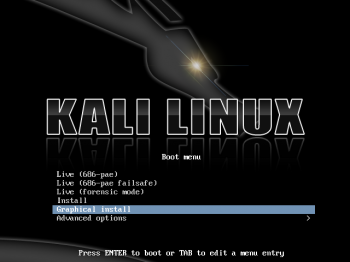

On official Kali website is recommended other program, but I used Rufus – and it works just fine: Settings in Rufus after you choose ISO file, press: Start There is a lot of official youtube videos for almost every PC vendor how to enter BIOS and enable boot option.Īfter we have BIOS boot menu enabled, we can prepare the USB for installing Kali.

I downloaded Kali Light version 2016.2 – 64-bit, my laptop I’m running Kali on is Windows 10, 64-bit, you can find ISO files for download on this web page:įirstly you need to have boot option enabled in BIOS on your PC, you enter the BIOS boot menu usually with F12, after the company name of pc is shown during start-up, it depends on tech vendor – otherwise you need to enter options in BIOS and change it – your PC asks you usually at the start-up down on the left. You can run Kali live directly from USB or SD card, steps are the same, it only occupies computers RAM it does not use any hard drive capacity for working live. This option is good if you don’t feel like installing another OS on the machine or playing around with partition magic third-party programs. Kali is Debian based Linux open source operating system by Offensive Security team of experts. Kali ain't really meant for that and you're better of installing another Linux distro as main-OS.As I promised, short tutorial on how to boot Kali live from USB. USB Persistence Encrypted would be handy to save your configuration of your tools or something, and to save logs, but I don't see why you'd use that unless you're really working in the field and need the configuration for a specific workplace/company/. It will also give you a fresh OS each time you boot. If you mess something up (e.g configuration) you can just restart from the USB and everything is back good. Install it, the text from the installation-menu is read out to you. If you choose USB Persistence choose this one! Alone with this option your USB is also encrypted with LUKS. If you now place a file on your desktop, it's saved on your USB and is again accessible when you boot from it. Use this if you want to install Kali on the USB you booted from, this way you can save what you've done etc. You'll use this when performing forensics on a device (e.g recovering sensitive files, getting evidence in crime scenes.) In this mode the internal HDD is never touched, and auto-mounting of devices is disabled. This is probably what you want when troubleshooting. Meaning that when the system fails it will (normally) not cause harm to your device. This is possible because Kali only writes to RAM and not your HDD.

So if you make a file on your desktop, that file will be lost when you restart. That means, that when you terminate/shutdown your laptop everything you've saved/edited in Kali is lost. This one will boot you into Kali, but only in the Live mode. I guess you are talking about these options:


 0 kommentar(er)
0 kommentar(er)
